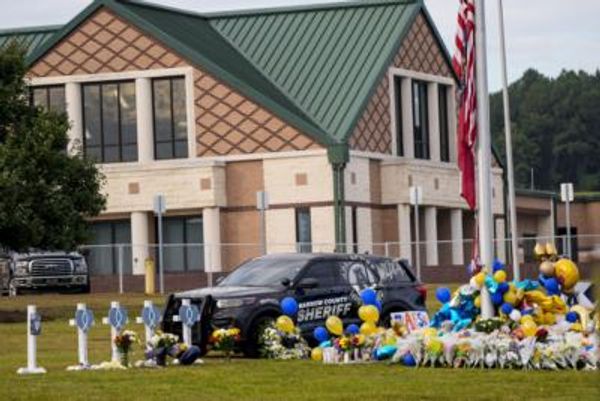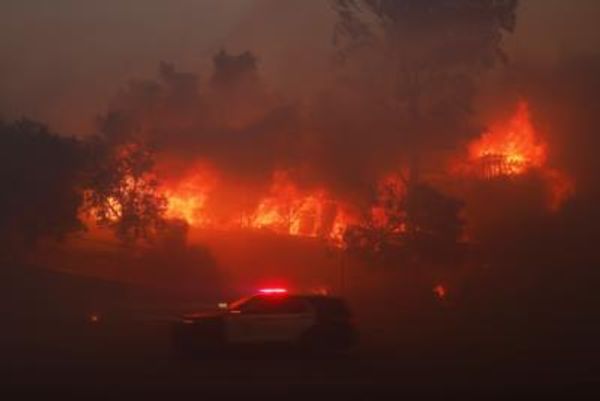WASHINGTON — Army National Guard Black Hawk helicopters will keep flying despite a string of crashes and strain on the fleet, the service told McClatchy, amid concerns from some lawmakers and defense experts that doing so could put additional lives at risk.
Three crashes in just over a year, including one last week of an Army Idaho National Guard UH-60 Black Hawk “have claimed the lives of nine members of our National Guard,” Sen. Kirsten Gillibrand, D-N.Y., wrote to Defense Secretary Lloyd Austin, in a request to further investigate the causes. One of the crashes involved a New York National Guard crew, and together the accidents raise “additional questions we urgently need answered,” she said.
For now, the Army is going to keep its Black Hawks flying, even as it acknowledges that increased strain on the force and concerns that upcoming budget pressures could make flying more dangerous for its air crews.
“Based on the current data, the Army does not see a mishap trend with National Guard UH-60s,” said Army spokesman Jason Waggoner. “There are currently no plans to conduct an Army-level stand down. Any lower-level stand down would be up to the unit.”
But the Army has been looking internally at its helicopter crashes, and says it has found a link between delayed defense budget approvals and its accident rates.
The Army found that in recent years its most severe helicopter accidents, resulting in loss of the aircraft or death of a service member, spiked each August, Brig. Gen. Andrew Hilmes, commanding general and director of safety at the U.S. Army Combat Readiness Center, told McClatchy in an interview.
“In five years we suffered 53 class A mishaps,” Hilmes said, referring to the most catastrophic level of crash, which involves either death or permanent injury to a crew member or destruction of the aircraft. “Interestingly enough, 22 or those 53, or 40 percent, occurred in the fourth quarter. So think July, August and September. And then we looked at it even further — 50 percent of those occurred in the month of August alone.”
The review found that units had been holding back on spending the funds they had for training flights to keep money on hand. Congressional delays in passing annual defense funding bills made their quarterly budgets unpredictable, and it made those units less willing to spend the funds they had.
The military services have to spend their annual budget before the end of the fiscal year, which ends Sept. 30, or they lose it. For pilots who had seen training opportunities limited during earlier months in the fiscal year, which erodes their proficiency, a push to use up flight hours made August more dangerous, Hilmes said.
“August, go figure, is the busiest month” for completing training flight hours, Hilmes said.
If budget pressures in Congress result in lawmakers again facing delays in passing the annual defense bill and instead passing a continuing resolution — a tool that keeps the prior year’s funding levels in place but inevitably means less money for operations because personnel costs have risen — those accidents could jump again, he said.
“My biggest concern isn’t necessarily that the budget will be cut, but that it won’t be enacted on time,” said Mackenzie Eaglen, a defense budget fellow at the American Enterprise Institute.
The Army operates about 3,500 transport, medical and attack helicopters across its active duty, National Guard and reserve force. Black Hawk helicopters make up about 65 percent of that fleet, Hilmes said.
The potential funding delay comes as the Army National Guard has seen a significant increase in demand for its forces and equipment in the United States to respond to wildfires, natural disasters, the pandemic and domestic unrest. Those demands are expected to continue to increase, the California and Washington state National Guard chiefs told reporters last month.
Over the last five years, the Black Hawk, which first entered service in 1979, has been the Army’s most widely used military helicopter, flying about a million hours more than the Apache and Chinook helicopters combined, Waggoner said. Its rate of accidents, however, remains the lowest of the three helicopters, he said.
Hilmes said when the Army looks at all levels of accidents, from the most serious involving the death of a crew member or loss of the aircraft, to less serious damage or injury caused by on-the-ground issues, “86 percent are caused by human error, the other 14 percent is due to material failure.”
“When it comes to crew coordination and being able to do the right thing on a moment’s notice, reacting to an emergency, that is a training issue,” Hilmes said. “Ultimately that is going to boil down to how many flight hours they have and how well that organization has been funded to train their pilots to a certain standard.”
“In light of pending budget cuts, if that’s what the future holds for us, that would be the first thing I would focus on,” Hilmes said.
The National Commission on Military Aviation Safety in December found that unpredictable funding was a key cause in an overall increase in aircraft accidents that the military services experienced from 2013 to the end of 2020, which resulted in 224 aviators killed and 186 aircraft destroyed.
“The problems with erratic funding ripple through all levels of military aviation,” the report found. It cuts training hours for pilots and ground crew and keeps units from buying needed spare parts, which results in aircraft that can’t fly. Those experienced crew often decide to leave the military, the report found, which results in less experienced crew training newcomers.
“The evidence is damning, and it’s right there. There’s no confusion about what’s happening or why it’s happening,” Eaglen said.







